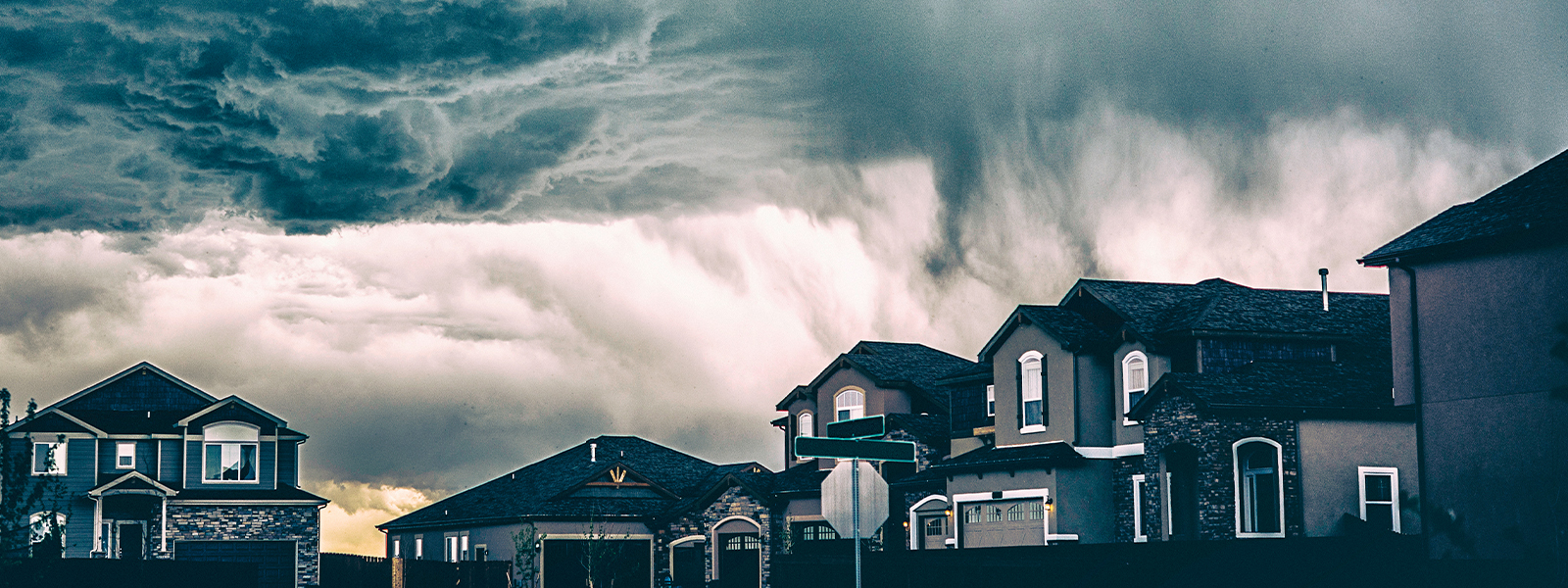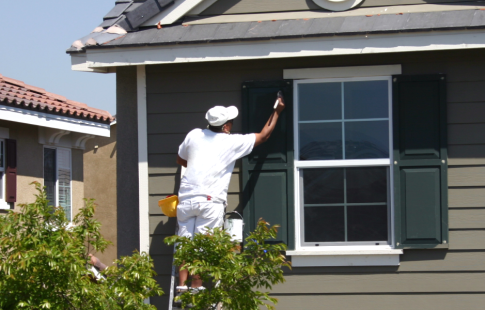Estimated reading time: 4 minutes
Around 1,200 tornadoes occur in the U.S. every year on average, according to the National Oceanic and Atmospheric Administration. They typically take place during the spring and summer, have been reported in every state, and can strike with little to no warning. To help you prepare, here are 12 ways to protect your home and family.
1. Make sure your insurance policies are up to date
Before a tornado hits, make sure your home is properly insured. If your house’s value or rebuilding costs have gone up, you may need to increase your coverage limits. Also, talk with your insurance agent about policies for added protection, such as flood insurance. Flooding generally isn’t covered by standard homeowners insurance but floods could result from a severe storm. Learn more in our blog “Is Your Home Underinsured? 3 Steps To Make Sure You’re Covered.”
2. Know the signs of severe storms
Understanding the signs of a tornado can help you respond and get to safety faster. Signs include a “rotating, funnel-shaped cloud, an approaching cloud of debris, or a loud roar like a freight train,” according to Ready.gov (Ready).
3. Identify the safest room in your home for taking cover
Ready recommends a “small, interior, windowless room on the lowest level of a sturdy building.” Common options include basements and storm cellars. If you don’t have either, alternatives on your lowest floor may include sheltering under a staircase or in an interior bathroom, hallway, or closet.
Note: Never shelter in a mobile or manufactured home during a tornado. Move to a sturdy structure or shelter. Learn more from the National Weather Service.
4. Consider installing a safe room or storm shelter
For even more protection, Ready suggests sheltering in a safe room that meets FEMA’s standards or a storm shelter that meets ICC 500 standards. They’re designed to take on severe storms.
5. Identify a local shelter
Locate a shelter to evacuate to. If you or a family member has medical needs, make sure the shelter can support them or find an alternative. A hospital, fire department, or police department may provide emergency power for medical devices, for instance. For more information, see the ADA National Network’s emergency planning tips.
6. Coordinate with your network
Create a family communication plan in case your family isn’t together during a tornado or has to shelter separately. Make sure everyone knows how to receive emergency alerts, where to seek shelter, and how to reconnect.
7. Make an emergency kit
Gather essentials like food, water, first-aid supplies, batteries, flashlights, local maps, personal sanitation items, medications, cash, and cell phone backup batteries. Stock up several days of supplies. These may be key if you have to shelter at home or evacuate. You can place them in portable, air-tight containers that you can easily carry to safety.
Also prepare important records and pets’ vaccination and prescription information, as they may need to stay in a kennel. For more tips, see the Red Cross’ list of suggested supplies.
8. Prepare furniture and supplies for taking cover
Falling and flying debris is always a risk in a tornado. Taking cover under heavy, sturdy furniture, such as workbenches and hefty tables may help. Various sources also recommend using things like mattresses and thick blankets for added protection. Also, take care to protect your head and neck.
Keep supplies prepared so you don’t have to search for them instead of getting to safety as a storm approaches.
9. Stay informed
There are several ways to learn about threats of severe storms and tornadoes in your area, including radio, television, and social media. However, receiving emergency updates on your cell phone may be the most immediate and effective method. Consider downloading the Emergency: Alerts app from the American Red Cross or FEMA’s mobile app. They’ll alert you if there’s a tornado or other natural disaster risk in your area. All that said, keep a radio or weather radio on hand in case your phone fails.
10. Contact utility companies
If you or a family member have health concerns, contact your gas, electric, and water companies. Ask that they prioritize restoring service to your home if it goes out. Many have special reconnection lists just for this reason.
11. Secure top-heavy furniture
To keep your family as safe as possible, the CDC recommends securing top-heavy furniture like bookshelves and dining room cabinets to the wall. They suggest using “L” brackets, corner brackets, eyebolts, or aluminum molding.
12. Inspect trees
Consider hiring an arborist to check the health of your trees, especially if you have any large trees close to your home that are at risk of falling during a storm. This could protect you and your neighbors, as well as the power supply if your trees are near powerlines.
Be cautious after the storm
The destruction and debris that tornadoes leave behind could pose risks to your safety. Use caution when leaving your shelter location and stay out of damaged buildings and homes. Watch for downed power lines and stay out of flood waters. They could be hiding power lines, dangerous objects, and wildlife, or carrying sewage and risks for disease. If your family members took shelter in different locations, reconnect at a designated meeting place as soon as it’s safe.
For more tips on preparing for severe weather and filing for disaster assistance, visit our Natural Disaster Assistance & Planning Center.







